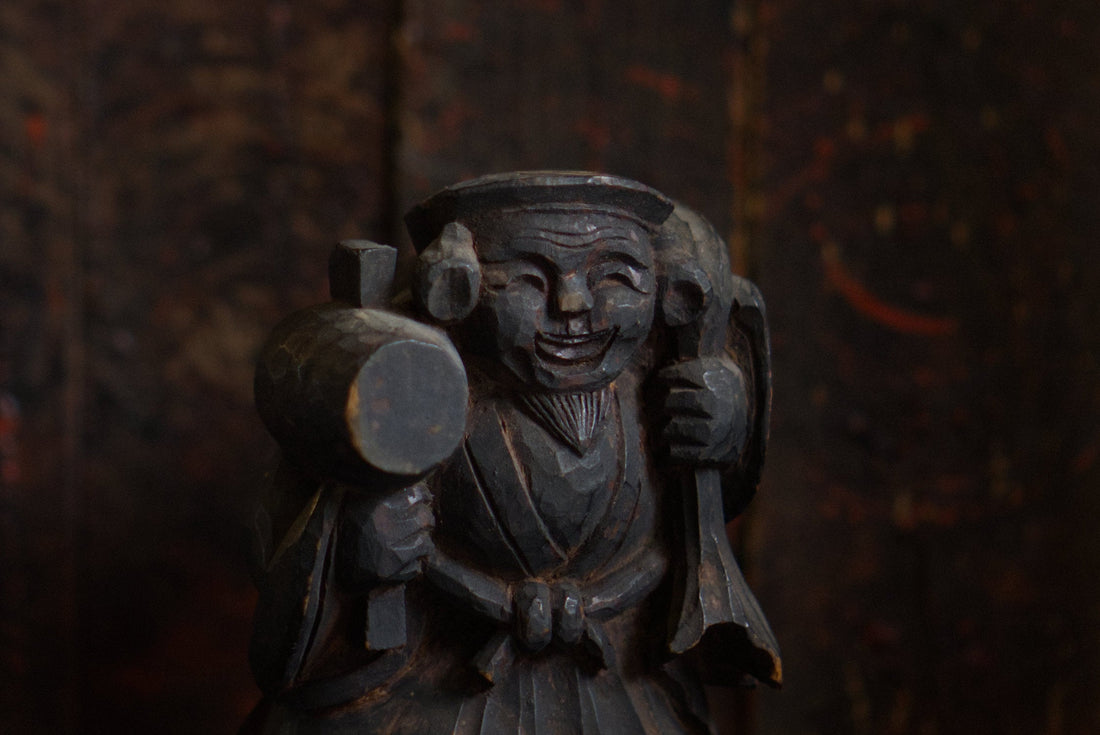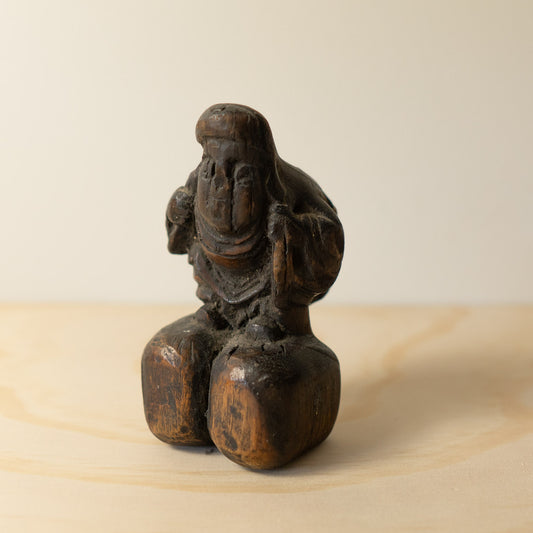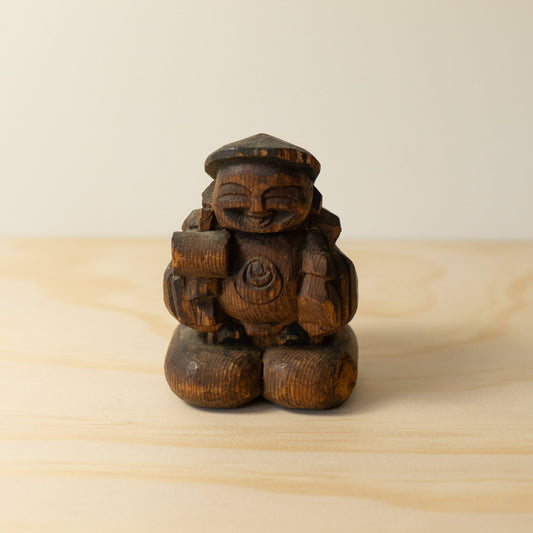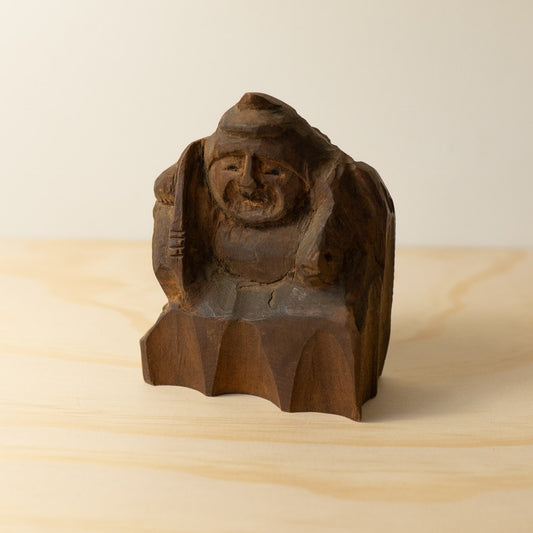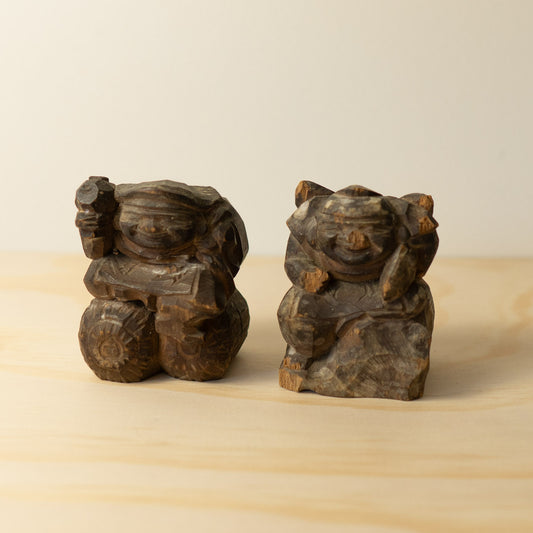On my most recent trip to Japan I met up with a dealer of Buddhist sculpture and folk crafts.
Kazuho Watanabe is an up and coming dealer on the Tokyo antiques scene and has been collecting and researching Japanese sculpture and Mingei folk crafts, He sells his objects at various markets and Antiques fairs around Tokyo and the surrounding area. He is especially interested in the hidden history and lore of buddhist folk sculpture.
He made contact with me and we agreed to meetup while I was in Tokyo for the 100th Tokyo Gift Show. (That's another story!)
On a very hot late summer day we met up at a really nice cafe/bar in Asakusa. It's the bar in the basement of a hostel called CITAN. 
Photo credit: CITAN Tokyo
When I arrived Watanabe San was already sitting at the back of the bar in a dark, dimly lit corner. He had with him a big suitcase.
Now, my Japanese is ok but pretty limited and not really conversational level. I understand a lot of terms relating to antiques, dates etc but I was worried about really understanding what he was saying. Thankfully, he arranged for one of the staff at CITAN to translate for us.
Hikari sama was a great asset, though she was young, she interpreted perfectly.
She was genuinely interested in what we were talking about, which I think helps massively. I have worked with interpreters in the past that really struggled in understanding what was being talked about, because sadly a lot of younger Japanese people have little knowledge about antiques and overall history. Much the same as anywhere I suppose! Anyway, it was incredibly helpful to have her there!
Epic Meeting!
Over the next 4 hours Watanabe San proceeded to pull out of his suitcase, countless religious figures and folk artefacts.
Now what made this encounter special for me is that this was not just your ordinary business meeting, where I look and buy, and not much is said. 

Watanabe San, genuinely wanted to share his knowledge with me and we enjoyed through Hikari's stellar translation, a fantastic conversation about the history of the pieces. He taught me about the evolution of the Daikokuten sculpture and how it changed over the years. What makes each piece unique or special in his eyes.
Learning about Daikokuten
I was interested to learn more about Daikokuten as it's such a ubiquitous image in Japan, from temples and shrines to food labels and signs. It fascinates me to learn that Daikokuten was originally the Hindu god Mahākāla, God of Death. When Buddhism was brought to Japan, the Shinto religion already existed and the two religions coexisted and eventually crossed over into each other, blurring the lines. The wrathful side of Daikoku eventually disappeared. He began to be represented as a smiling god, he was also combined with the native Shinto deity Ōkuninushi. This fusing of the two deities was the start of Daikoku's transformation into the god of wealth, prosperity and fertility.

Watanabe talked to me about the evolution of Daikokuten related to being the god of fertility and how it is often is linked to representation of male genitalia. His hat for example when viewed from certain angles is a subtle, or in some cases not so subtle representation of the phallus. Japan has a culture of phallus worship related to Shinto and so it was this influence that morphed the image of Mahākāla into the vaguely erotic designs we see.

Extraordinary experiences in Japan are not unique, but I really enjoyed this connection that we shared, discussing antiques and history. I always like to see the surprise on Japanese dealers' faces when I know what they are talking about too! Often Japanese people find it hard to believe that I care so much about Japanese history and antiques. I think that's why Watanabe san and I had such an enjoyable time, sharing our passion for Japanese antiques, Mingei and folk traditions.
In the end I purchased a number of Daikoku and Ebisu sculptures as well as some other interesting folk items that he had brought with him.
I was so grateful to Hikari Sama too, I bought for her a small Buddhist figure that she liked to say thankyou for her excellent translation and genuine interest in our discussion.
I was completely exhausted by the end of the meeting, but I left with my brain and heart full. It is these experiences that keep me coming back to Japan, time after time and I am genuinely so happy to share my passion with you.
To see the currently uploaded items from this meeting please below or visit our Folk Sculpture Collection
